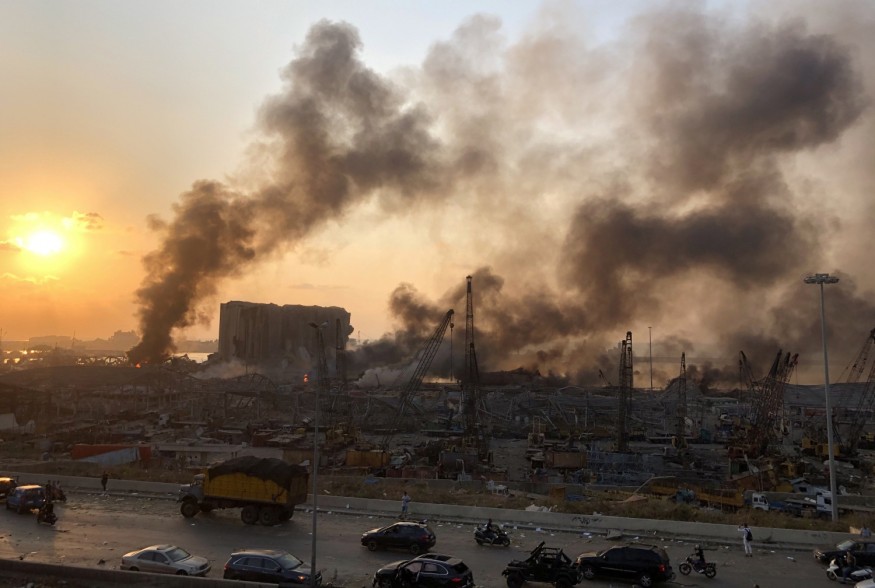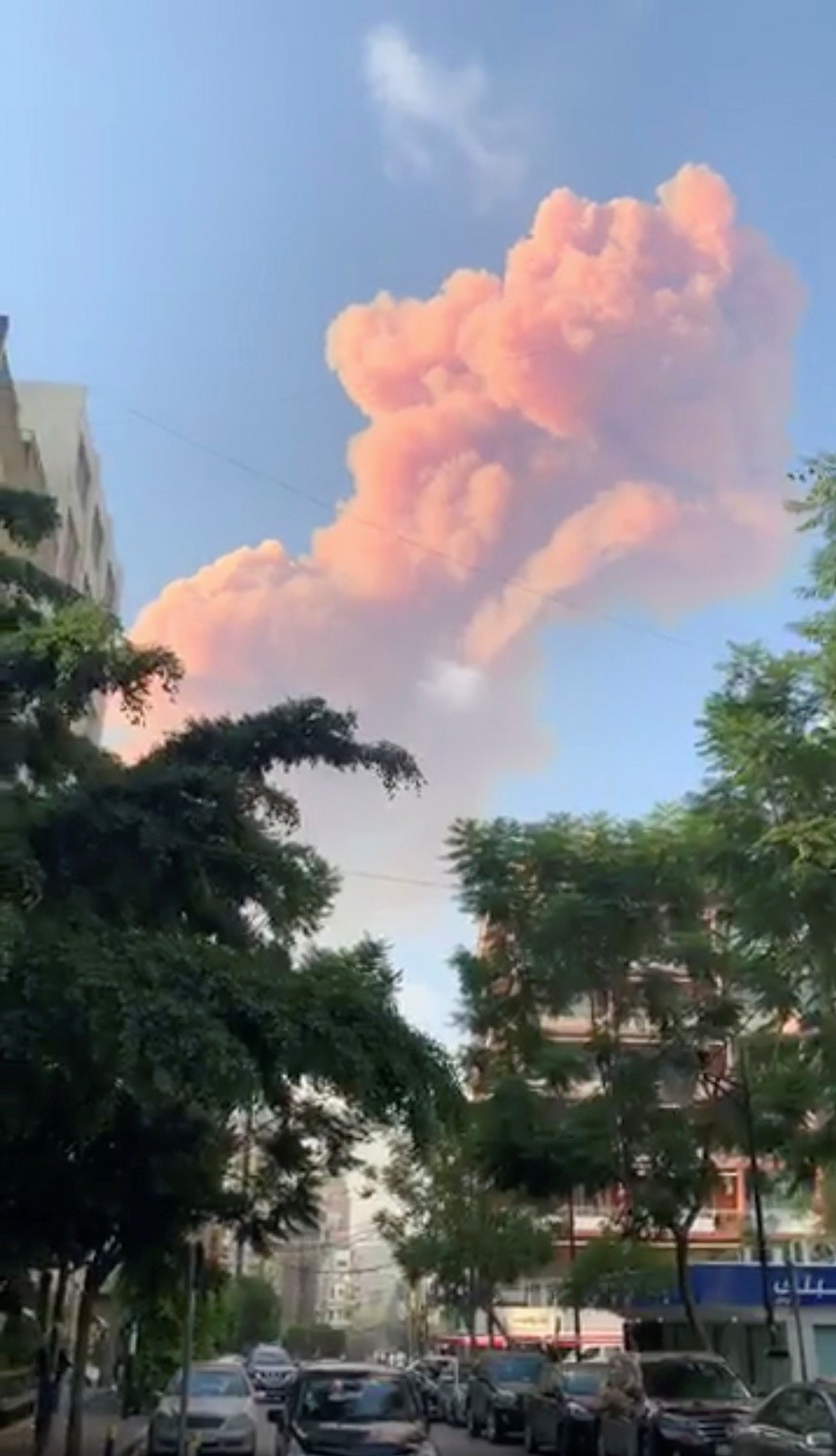The world was shocked as a deadly blast in a port in Beirut killed 100 people and inflicted injuries to 4,000 people Wednesday morning. The death toll is still rising, and the damaged of the explosion is visible even at two miles from the blast.
According to Prime Minister Diab, a shipment of ammonium nitrate, which is estimated to be 2,750 tons, was in a depot for six years and no safety measure. The indicated figure coincides with a report that a ship carrying the same quantity had unloaded its cargo in 2013.
Videos and reports say that two explosions shook Beirut: the second one was much bigger than the first, so forceful that it overturned cars, damage and shake buildings all over the city, and threw debris over a wide area. A shock wave also erupted from the second explosion and enveloped the city in a cloud of debris and smoke. Flames from the rubble continued rising after the explosion, and smoke clouds tinted pink in the sunset rose thousands of feet into the sky.
In Cyprus, 100 miles away from Beirut, the second blast registered magnitude 3.3 in seismographs.

Ammonium Nitrate
Ammonium nitrate is a highly volatile material usually used for fertilizer and mining explosives. According to a chemical engineering lecturer at the University of Melbourne, Gabriel da Silva, the chemical is an oxidizer, drawing oxygen to fire thus, causing the fire to be more intense. It does not explode on its own, however, and only sparks under particular conditions, which are difficult to realize. An extreme condition is necessary to set off an explosion, da Silva said.
Ammonium nitrate mixed with contaminants such as oil becomes highly explosive, which da Silva believes is what happened in this case.
READ: Saving Giant Panda at the Expense of Leopards, Snow Leopards, Wolves, and Asian Wild Dog
Effect on the Environment
According to da Silva, the blood-red color of the smoke from the blast is due to the nitrogen oxide air pollutants in it. The chemicals from the air usually disintegrate quickly; lingering pollutants may cause environmental concerns in the future.
However, Anthony May, a retired ATF explosives investigator for the US government deems that the dark or dark red cloud in the videos of the blast "is not consistent with ammonium nitrate," which has an indicative sign of a yellow smoke cloud. He said that although ammonium nitrate may be involved, it seems that there are also other items.

The United States Embassy in Beirut advised people in the area to "stay indoors and wear masks if available" as toxic gases following the blast may cause health concerns.
The blast, May said, may be likened to a kiloton nuclear bomb. "There was no nuclear material that we know of involved in this, but the shock wave generated, the blast wave generated is at equivalent to a small nuclear device," May said.
Events in the Past
In 1947, a consignment of 2,300 tonnes of ammonium nitrate exploded in Texas City. The fire caused a 15-foot tidal wave, and around 400-600 people died. A mushroom cloud rose 2,000 feet into the air damaging two small planes. It created a chain of fire reaction that a ship containing vast amounts of sulfur caught fire and exploded. Many of the town's fire crew died from the incident.
In 1995, the 4 tons of the ammonium nitrate triggered the Oklahoma bombing, a domestic terror attack that claimed the lives of 169 people.
© 2025 NatureWorldNews.com All rights reserved. Do not reproduce without permission.





